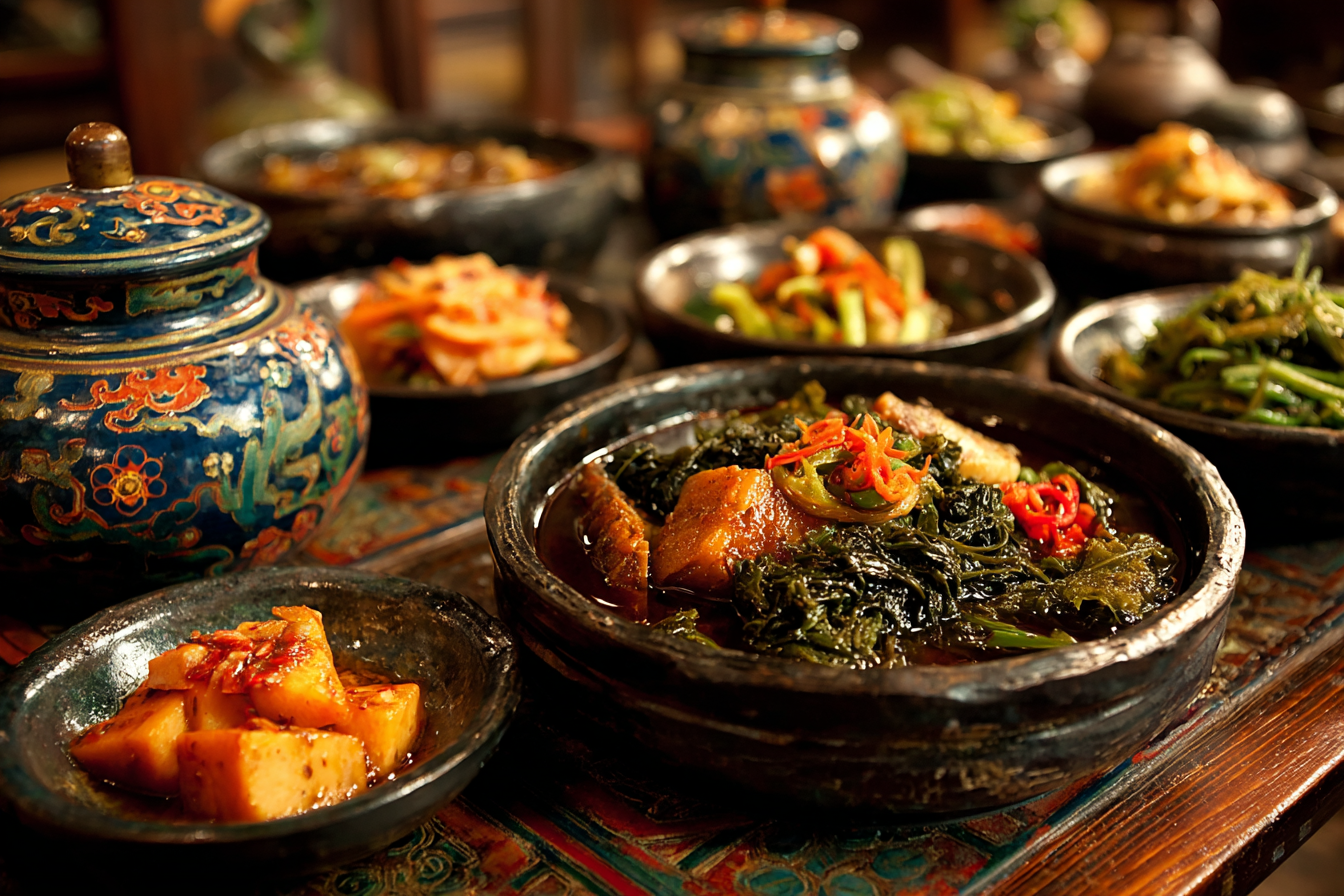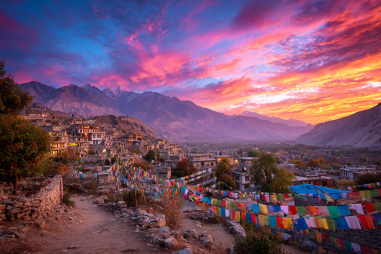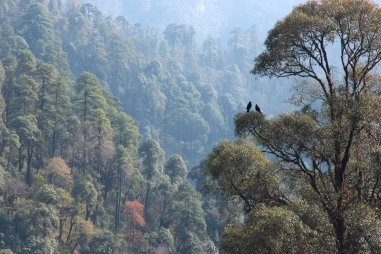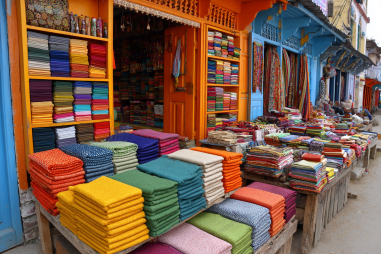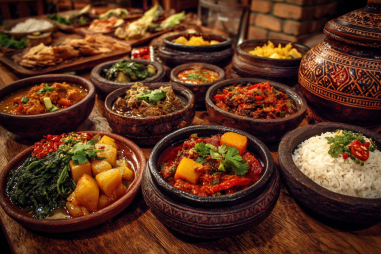Nestled in the breathtaking landscapes of the Himalayas, Jomsom is not only a haven for trekkers and nature enthusiasts but also a treasure trove of unique culinary delights. The local cuisine here embodies centuries of Himalayan tradition, offering hearty, soul-warming meals crafted from fresh, indigenous ingredients. For travelers eager to dive into Jomsom’s flavors, understanding its culinary heritage is just as vital as witnessing its stunning vistas. Let’s embark on a flavorful journey to savor the authentic tastes of Jomsom, exploring what makes the local cuisine so special and where you can experience it firsthand.
Exploring Jomsom’s Culinary Traditions
Jomsom’s culinary traditions are a beautiful reflection of its geographic isolation, cultural tapestry, and climatic conditions. This mountain town, situated in Nepal’s Mustang district, relies heavily on locally grown produce, animal husbandry, and age-old cooking techniques that have been passed down through generations. The food is designed to be nourishing and energy-packed, perfect for the cold weather and the physically demanding lifestyle of the locals.
The cuisine is heavily influenced by Tibetan and Nepalese flavors with a focus on simplicity, warmth, and comfort. Meals often center around barley, buckwheat, millet, potatoes, and seasonal vegetables, paired with meats like yak, mutton, or chicken. Dairy products such as cheese and butter—especially yak butter—also play a significant role. Each dish tells a story of resilience and community, emphasizing communal dining and shared plates.
Popular Dishes and Their Origins
The local dishes of Jomsom are hearty, filling, and straightforward, bearing roots in the mountainous lifestyle. Some of the must-try dishes include:
- Momos: These steamed or fried dumplings filled with minced yak meat or vegetables are a staple snack across the Himalayas. Originating from Tibetan cuisine, momos in Jomsom are particularly savory and are usually served with a tangy tomato-based sauce or spicy chili chutney.
- Thukpa: A warm noodle soup made with hand-pulled wheat noodles, mixed vegetables, and meat broth. Thukpa originated from Tibetan settlers and adapts well to the cold Himalayan climate, providing both nutrition and comfort.
- Gundruk: Fermented leafy green vegetable dish, primarily made from mustard leaves or spinach, which brings a distinct sour flavor to the palate. It’s a traditional method of preserving greens for the winter months.
- Yak Cheese: Known locally as “chhurpi,” this firm cheese made from yak milk is often chewed like candy or added to dishes to enhance flavor and nutrition.
- Tsampa: Roasted barley flour mixed with butter tea or yogurt, serving as a quick energy booster and an essential part of daily meals.
- Sel Roti: A traditional sweet, deep-fried rice flour bread that is crispy on the outside and soft inside, often enjoyed during festivals and special occasions.
Recommended Local Eateries and Markets in Jomsom
Jomsom’s local eateries offer an intimate glimpse into Himalayan hospitality paired with authentic flavors. For travelers looking to taste genuine local cuisine, here are some favorite spots and markets:
- Mountain View Restaurant: Popular among trekkers for its welcoming atmosphere and an extensive menu featuring classic Tibetan and Nepalese dishes like momos and thukpa.
- Yeti Mountain Home Restaurant: Known for its cozy ambiance and traditional dishes prepared with home-grown ingredients.
- Traditional Local Stalls: Scattered near the marketplace and along trekking routes, these stalls serve freshly made momos, barley bread, and butter tea—perfect for a quick, authentic bite.
- Jomsom Market: Visit on market day to witness the vibrant assortment of fresh produce, dried meats, and handmade snacks. Engaging with local vendors provides insight into the culinary culture and a chance to sample homemade delicacies.
Unique Ingredients and Traditional Cooking Methods
What sets Jomsom’s cuisine apart is not just the dishes but the unique ingredients and how locals prepare their food. The use of barley, buckwheat, and millet thrives thanks to their adaptability to high-altitude farming. Yak meat and dairy products are common protein sources, with yak butter being indispensable in many recipes, including the famous butter tea.
Cooking methods in Jomsom emphasize stewing, steaming, and fermenting, which help retain nutrients and flavor while ensuring the food remains suitable for the cold climate. For instance, momos are steamed to preserve juiciness, thukpa is simmered slowly to develop rich broth flavors, and gundruk involves fermentation to enhance shelf-life and add tangy notes. The use of stone ovens and wood-fired stoves continues to connect culinary practices with traditional living.
Dining Customs and Etiquette in Jomsom
In Jomsom, dining is often a communal experience, reflecting the close-knit nature of Himalayan communities. Guests are usually served the best portions of food as a sign of respect and hospitality. Visitors can observe these practices and join communal meals when invited, which adds a cultural dimension to the gastronomic adventure.
When eating in local homes or traditional restaurants, use your right hand to eat, especially with bread like sel roti or tsampa mixed by hand. It’s polite to finish all the food on your plate, as leaving leftovers can be considered wasteful. Sharing food is common, and it is customary to offer a portion to others before serving yourself. Additionally, butter tea is often sipped slowly, enjoyed for its warm, slightly salty taste.
Food-Related Festivals and Events
Jomsom hosts several festivals where local cuisine takes center stage, providing a lively opportunity to indulge in traditional flavors. One prominent event is the Tiji Festival, celebrated in the nearby Lo Manthang, which includes feasts featuring local delicacies like yak meat, fermented vegetables, and specialty breads.
During Losar, the Tibetan New Year, families prepare special dishes such as rice wine, sweet breads, and meat stews to mark the auspicious occasion. These festivals are perfect for travelers interested in both cultural immersion and culinary exploration, offering a chance to taste celebratory dishes you might not find in everyday settings.
Tips for Travelers with Dietary Considerations
Traveling in Jomsom with dietary restrictions can be challenging but manageable with some preparation. The cuisine often incorporates meat and dairy, but vegetarian options like vegetable momos, thukpa with vegetable broth, and barley-based foods are commonly available. Always communicate your preferences clearly when ordering—it helps to learn a few phrases in Nepali or Tibetan or carry a translation card.
For those needing gluten-free options, millet and buckwheat-based dishes are naturally gluten-free, but cross-contamination can occur in communal cooking. Carrying some packaged snacks is wise, especially while trekking. Additionally, sourcing filtered or purified water is essential as traditional dishes may include local water or ice.
By embracing local food customs and preparing ahead, travelers can enjoy the rich flavors of Jomsom’s cuisine without compromising their dietary needs.
Enjoying the Taste of Jomsom
Savoring the local cuisine in Jomsom is more than a meal; it’s an immersion into Himalayan culture, history, and lifestyle. From the warm, comforting bowls of thukpa to the spicy, satisfying momos and the unique fermented tastes of gundruk, every bite offers a story. Whether you’re dining in humble mountain-side stalls or engaging in festive community feasts, the flavors of Jomsom promise to delight the palate while enriching your travel experience.
So, when you find yourself amid the breathtaking mountain views of Jomsom, don’t just marvel at the scenery—allow your senses to indulge in the traditional flavors that make this Himalayan town a culinary gem worth discovering.

